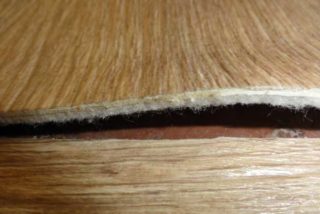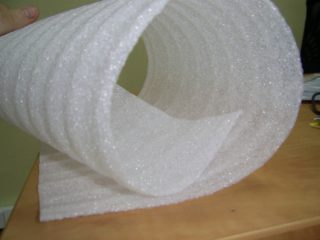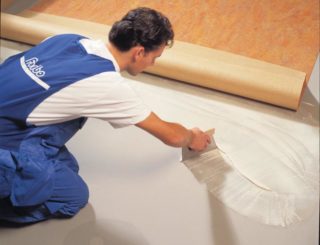The construction market offers a huge list of materials used for flooring, including insulated linoleum. This is a roll multilayer product that has a foamed or warm base, a wear-resistant layer and a top decorative coating. Thickness and stiffness varies depending on the composition and strength class of the product. The products are mainly used in residential buildings, apartments and cottages, especially in rooms where for some reason it is not possible to install a warm floor.
Advantages and disadvantages
The advantages of using this material include the following properties:
- Decent insulation performance: the surface heats up quickly, holds heat well, so it’s comfortable to walk on the floor.
- Possibility of laying both on a concrete or wooden base.
- The material masks surface defects, including cracks, chips, uneven areas.
- If you lay linoleum with insulation, you can further improve the thermal insulation parameters of the room.
- Pleasant to the touch texture, making walking on the surface comfortable even without shoes.
- Environmentally friendly composition, the absence of toxic components, which makes it possible to lay in the children's room.
- Good sound insulation, especially in varieties, the basis of which is made of polyvinyl chloride, foaming material.
- A huge list of textures and colors. On sale you can find plain linoleum of various colors, options with a combination of tones, geometric patterns, imitation of stone or wood.
The level of strength is not too high, in addition, the material is sensitive to moisture, especially if it is a variety with a pile. For this reason, it is not recommended to lay warm linoleum on a cold floor in rooms with high traffic, in bathrooms, kitchens, bathrooms and hallways.
Product Types
There are several varieties of flooring, differing in composition and basic characteristics.
With warm backing
The base is made of jute or felt, the top coating is a polymer film up to 1.5 mm thick. Linoleum provides good insulation, has an elastic structure, during installation it is enough to lay it on the base without the use of glue. The downside of this coating is considered reduced strength. The product with a warm substrate is suitable for bedrooms, personal rooms and other rooms with low traffic and a minimum amount of heavy furniture. In addition, jute or pile material is more sensitive to moisture, which causes fungus and mold inside.
Foam based
Linoleum with a base of foamed polyvinyl chloride has the following advantages:
- Increased mechanical strength, wear resistance.
- Practicality, minimum care requirements.
- Resistance to ultraviolet: the surface almost does not fade in the sun.
- The increased term of operation.
Thick linoleum insulated with foamed polyvinyl chloride has a base of up to 3 mm, up to half the total thickness, it is not so sensitive to humidity and is suitable for rooms with medium and high traffic - corridors, living rooms, offices.
Material Features
To decide which linoleum is best for an apartment, with or without insulation, you need to pay attention to the technical parameters of the products.On sale are many varieties that differ in structure, degree of strength, design and price.
Characteristics
Depending on the type of product, insulated linoleum has a total thickness of 0.7-4.5 mm, the protective layer is 0.2-0.5 mm. Semi-commercial and commercial varieties are more durable and thicker, but they are more expensive. The base can be made of PVC, felt, jute, and other components of predominantly natural origin. By the degree of wear resistance, the material is household, for office and for industrial premises. The first category includes 21-23 classes, the second - 31-34, and the third - goods 41-43 classes.
Life time
Depending on the class and purpose, the service life also varies. On average, insulated linoleum retains quality for up to 10 years. Commercial varieties used in residential premises can last up to 12-13 years. With increased traffic, the coating will fade faster and require replacement.
Moisture resistance
Natural varieties with a felt or jute base are less resistant to moisture, when used in a bathroom or kitchen, linoleum quickly molds. Such material is optimal for children's rooms and living rooms. A species with a PVC base is more resistant to water and other liquids, so products can be laid in rooms with high humidity.
When buying insulated linoleum, you need to pay attention to many additional characteristics. You should compare the proposed products in terms of resistance to abrasion, mechanical stress, including point and directional. It is necessary to look at the level of color fastness, the combustibility class, and the degree of safety. It is important that certificates of conformity to fire requirements and GOST standards are issued for the goods.
Choice for an apartment
To choose linoleum for an apartment, you need to consider the following factors:
- Appointment of the premises. If the room is non-residential, it is not always advisable to lay such a floor covering. If the building is not heated or heat loss is high and you need to reduce costs, you can use pile linoleum.
- The quality of heating. When using weak equipment, the use of insulated flooring will bring little benefit.
- If the room has a high temperature humidity, you need to choose a material based on artificial components.
It is important to consider the compatibility of shades and patterns with the design of the rooms, as well as the color scheme of the entire room.
Styling features
Before installation, it is required to prepare the base: it is cleaned, repaired, repairing cracks or chips, if any. Laying is carried out indoors at a temperature above 18 degrees Celsius. For bonding use special glue. Lubricate the wrong side along the perimeter and evenly across the width, this will provide maximum adhesion.
If the coating is laid on a concrete floor without infrared heaters, a felt variety is usually used. For additional thermal insulation, it is required to lay a layer of penofol plates. Thanks to this, heat loss will be lower.








